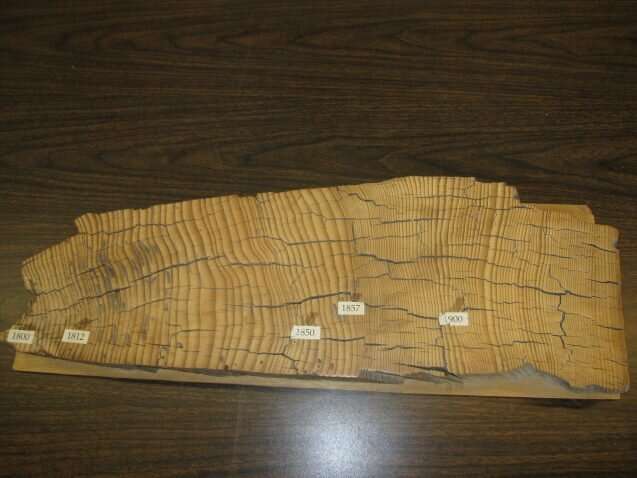New tree ring analysis method may open insights to past climate

Satellite imagery of earth's vegetation, measurements of carbon dioxide in the air and computer models all help scientists understand how climate is affecting carbon dynamics and the world's forests. But these technologies stretch back only decades, limiting our picture of long-term changes.
A new study in the journal Nature Communications shows how information revealed by a new method of analyzing tree rings matches the story told by more high-tech equipment over the short term. Because trees are long-lived, looking back in their rings with this new approach may add decades or even centuries to our understanding of carbon storage and how climate change is affecting forests.
Traditionally, tree-ring scientists measure variations in the widths of tree rings in order to determine year-by-year changes in past temperatures or rainfall. This method can produce a reasonable picture in many cases, but has its limitations.
To test whether tree rings are a good proxy for modern satellite and other data, the scientists examined ring samples from two widespread tree species—tulip poplar (Liriodendron tulipifera) and northern red oak (Quercus rubra) – growing in three climatically different regions of the eastern United States. By analyzing isotopes of carbon and oxygen stored in the rings, they compared the trees' own picture of forest productivity to estimates derived from satellites. They found strong agreement each year, and over time.
The analysis also revealed that the biggest changes in annual forest growth in this region were linked to moisture availability. "Our method showed that the productivity of a forest can be estimated using information from just five trees," said Laia Andreu-Hayles, a tree-ring researcher at Columbia University's Lamont-Doherty Earth Observatory, and coauthor of the new study. "The stable isotopes measured in tree rings are highly sensitive to tracking moisture."
The team said that to take full advantage of the new method, many more sites over wider areas would have to be sampled. "When we put tree ring data to work in historical climate models, we find that the models are more powerful when more species are included," said coauthor Neil Pederson, an ecologist at Harvard Forest. "I suspect this might also be the case when we use models to look forward, to future forest productivity and carbon storage."
More information: Mathieu Levesque et al. Tree-ring isotopes capture interannual vegetation productivity dynamics at the biome scale, Nature Communications (2019). DOI: 10.1038/s41467-019-08634-y
Journal information: Nature Communications
Provided by Earth Institute
This story is republished courtesy of Earth Institute, Columbia University http://blogs.ei.columbia.edu.




















